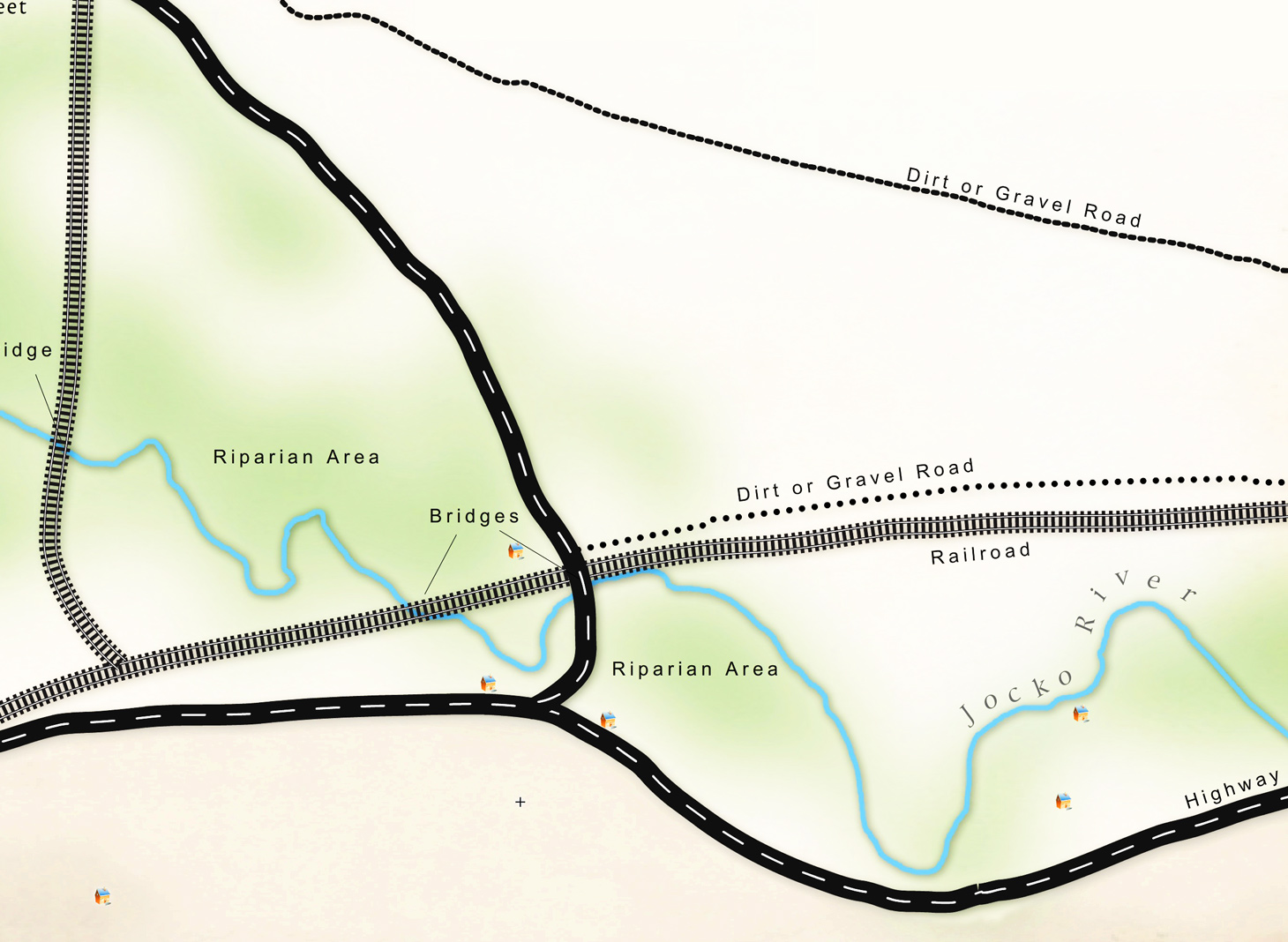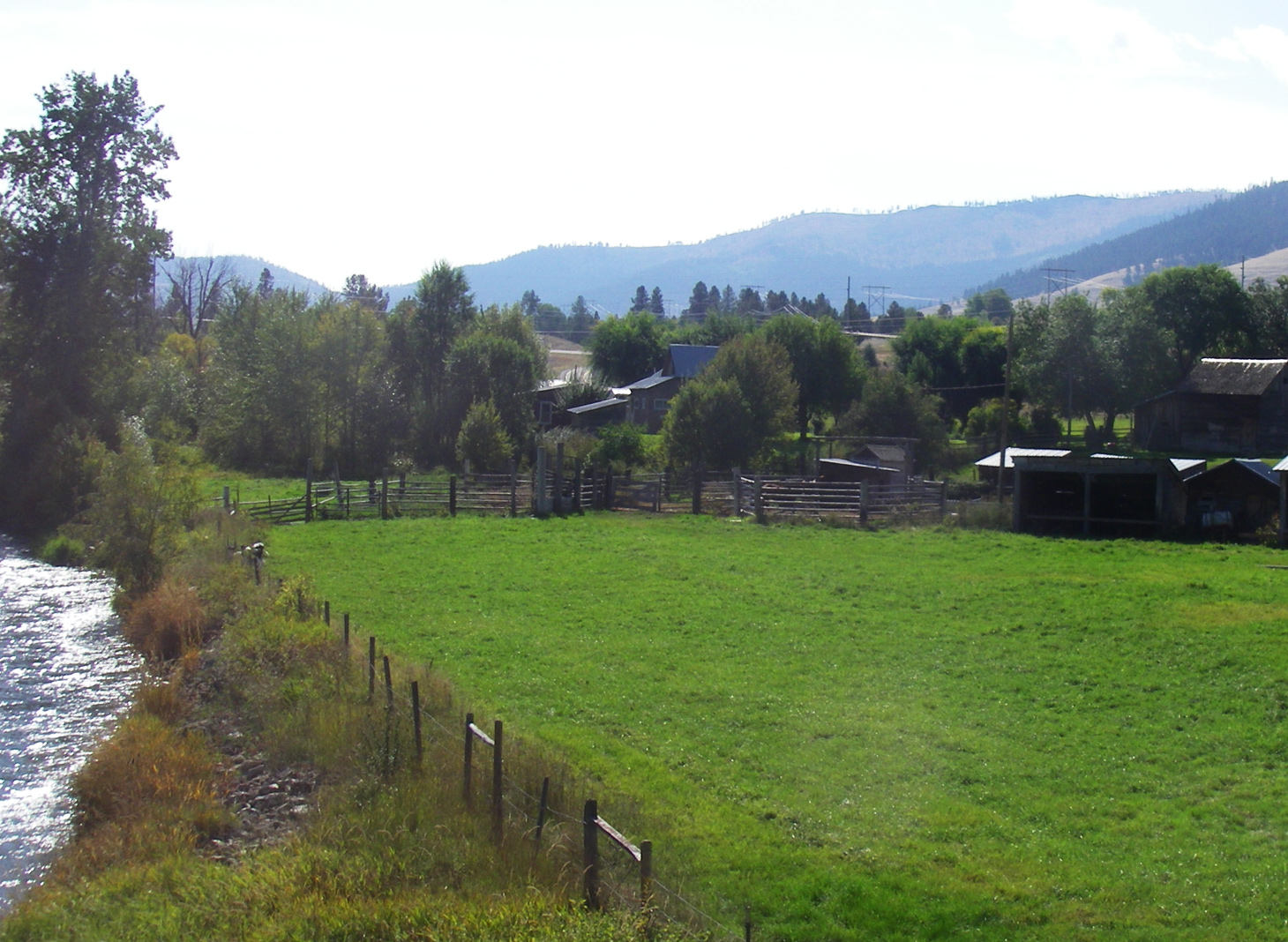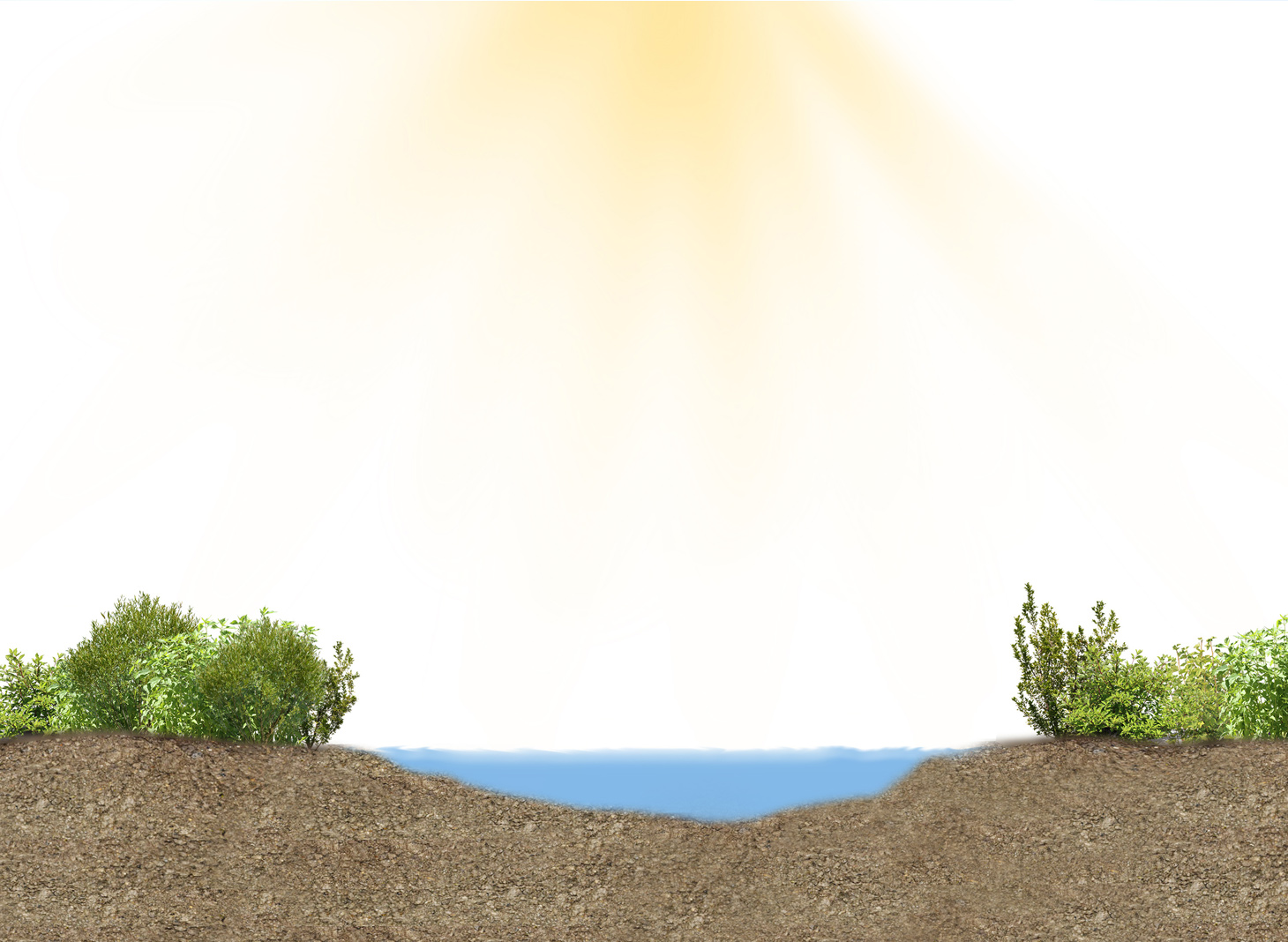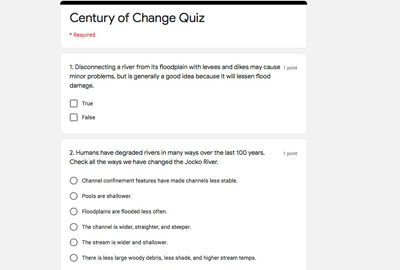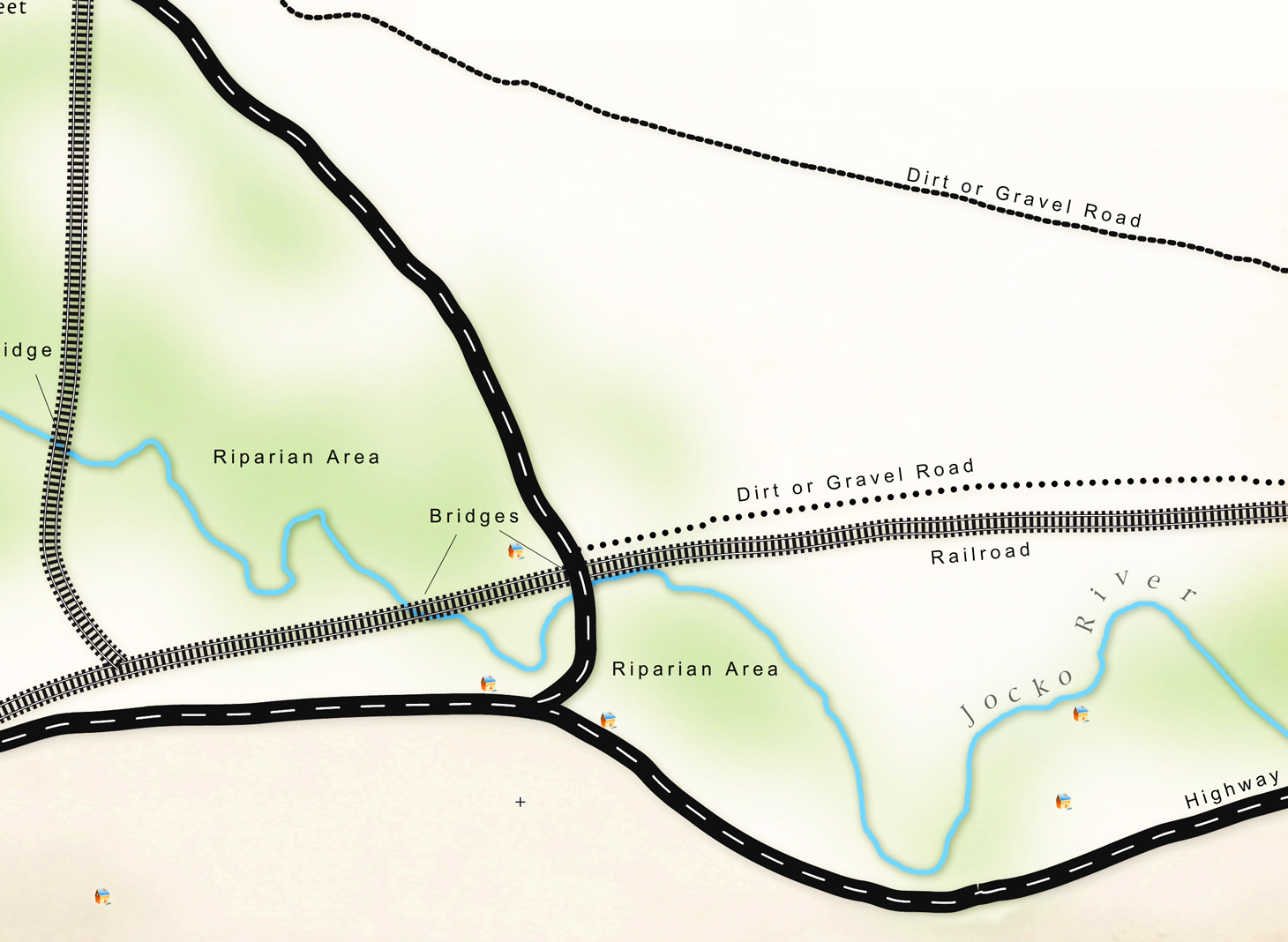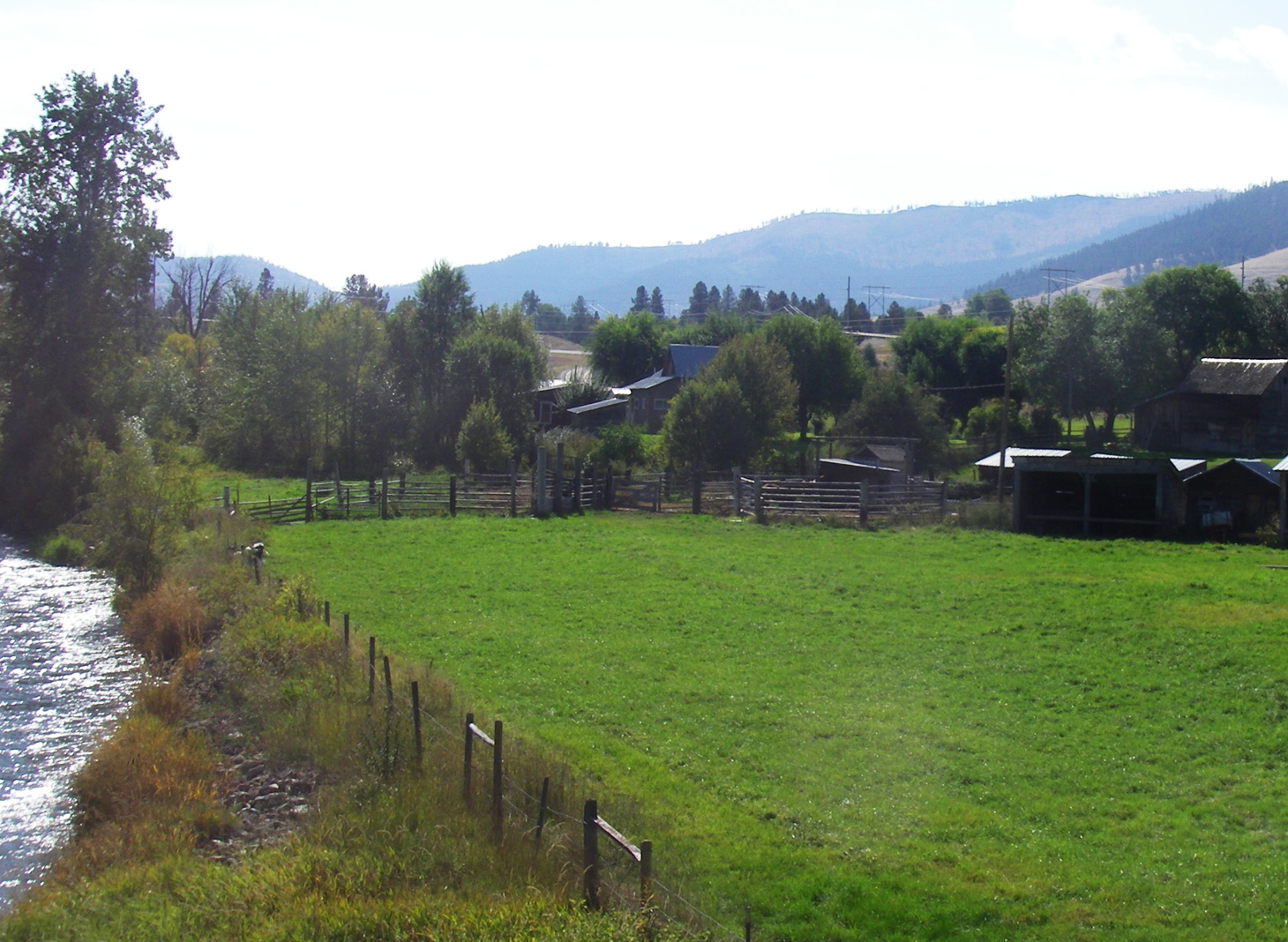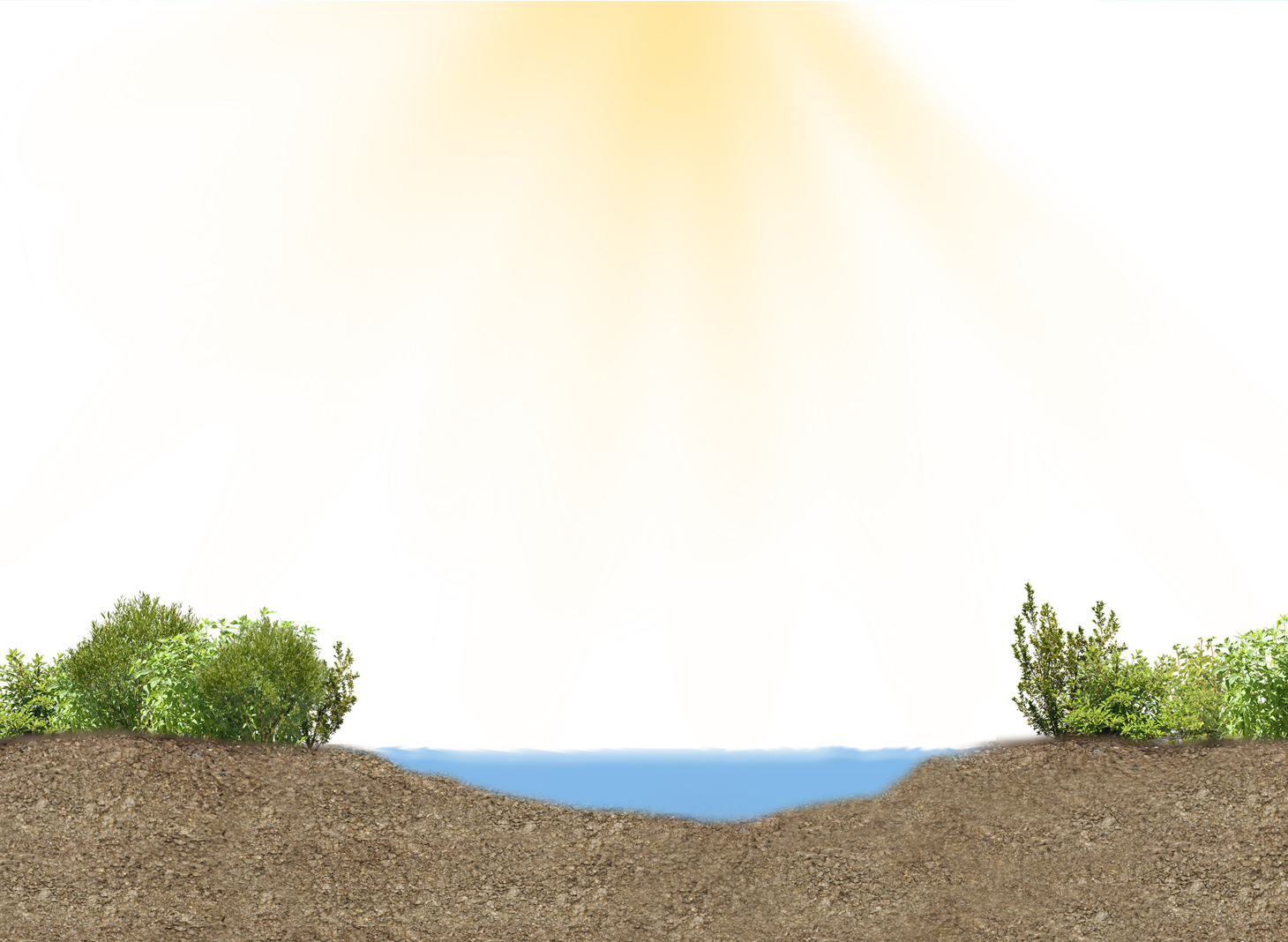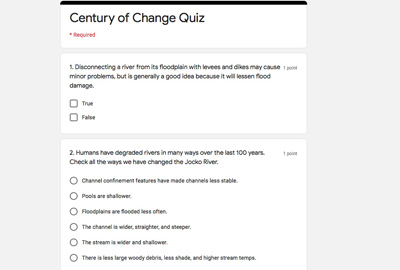A Century of Change
How we changed a river
Transportation Corridors, Non-native Species, Land Clearing, and Climate Change
They put too many different kinds of fish in the creeks and rivers. I think that's how it goes nowadays. They put fish here and there. Now our old fish are gone. Louise McDonald, Salish Elder
Over the past 100 years, people have brought many changes to the Jocko River, a number of which have impacted fish and wildlife. For example, five key measures of fish habitat quality suggest the system is not functioning well: water temp-erature is elevated, large woody debris is scarce, pool frequency and quality is poor, stream-bank condition is poor, and channel width-to-depth ratios are higher. What has caused these changes? The list includes irrigation withdrawals, the construction of levees and berms, the loss of riparian vegetation, floodplain encroachment by homes—there are a number of causes. Each is a disturbance that hinders natural processes within the watershed. Some have rippled through the system and affected fish and wildlife. Click below to learn more.
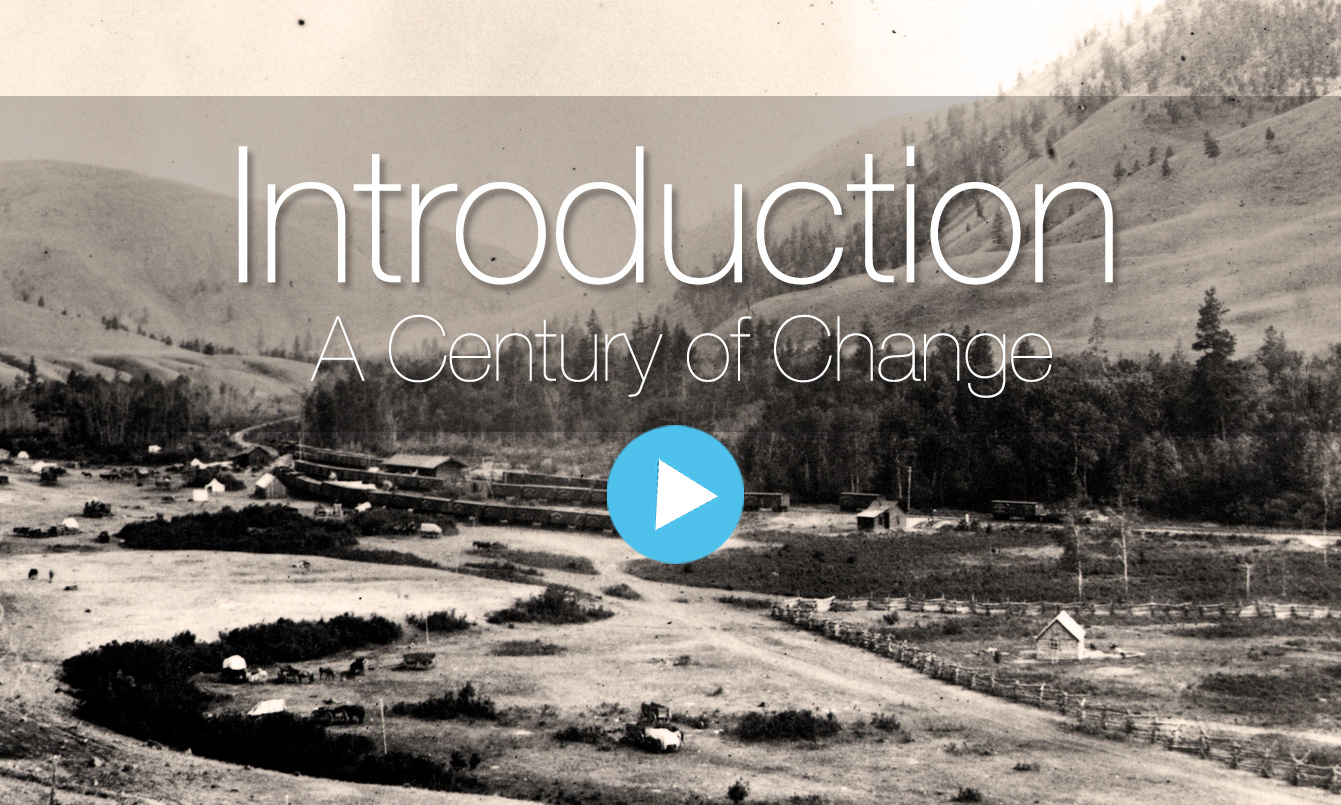
Learn More
A Century of Change
How we changed a river
Transportation Corridors, Non-native Species, Land Clearing, and Climate Change
They put too many different kinds of fish in the creeks and rivers. I think that's how it goes nowadays. They put fish here and there. Now our old fish are gone. Louise McDonald, Salish Elder
Over the past 100 years, people have brought many changes to the Jocko River, a number of which have impacted fish and wildlife. For example, five key measures of fish habitat quality suggest the system is not functioning well: water temp-erature is elevated, large woody debris is scarce, pool frequency and quality is poor, stream-bank condition is poor, and channel width-to-depth ratios are higher. What has caused these changes? The list includes irrigation withdrawals, the construction of levees and berms, the loss of riparian vegetation, floodplain encroachment by homes—there are a number of causes. Each is a disturbance that hinders natural processes within the watershed. Some have rippled through the system and affected fish and wildlife. Click below to learn more.
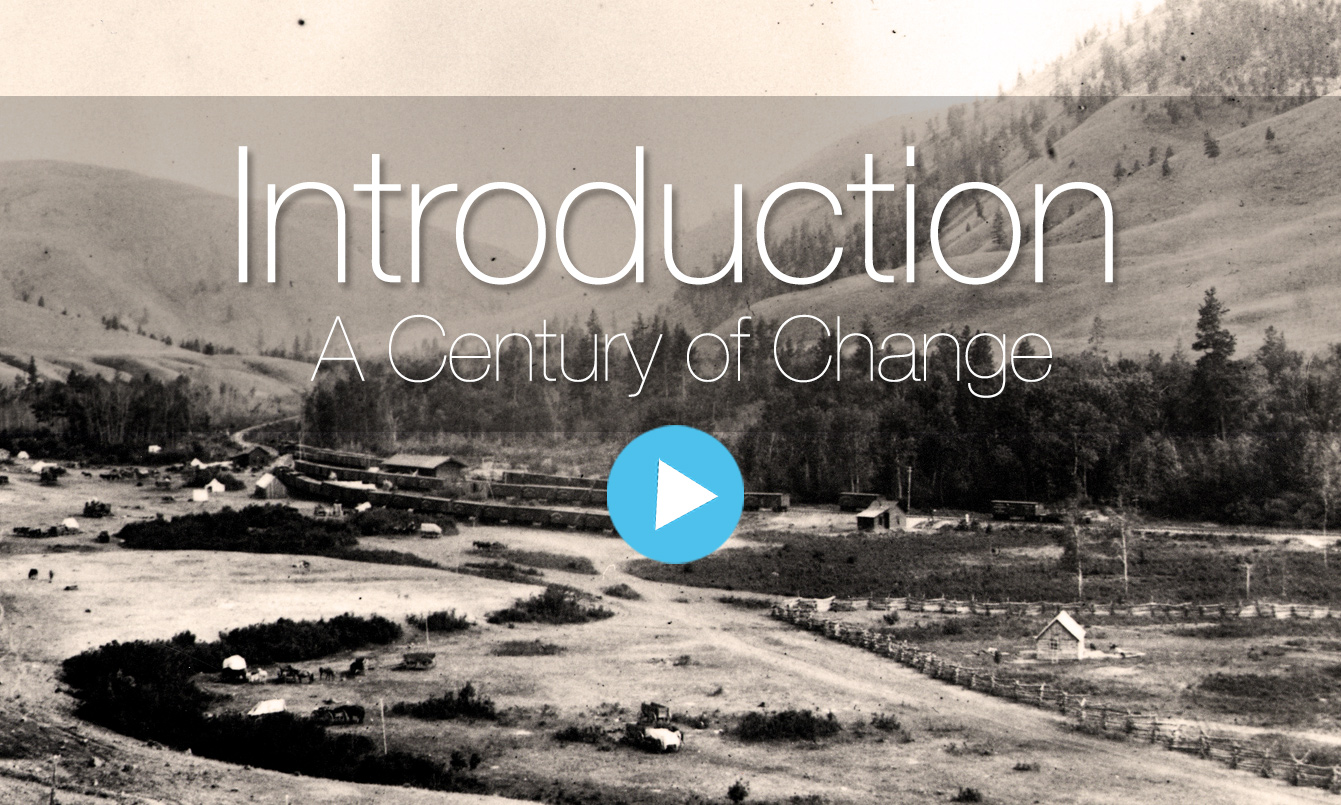
Learn More
Culture and History
Living Sustainably With the River and the Community of Life It Supports
Transportation Corridors, Non-native Species, Land Clearing, and Climate Change
They put too many different kinds of fish in the creeks and rivers. I think that's how it goes nowadays. They put fish here and there. Now our old fish are gone. Louise McDonald, Salish Elder
Over the past 100 years, people have brought many changes to the Jocko River, a number of which have impacted fish and wildlife. For example, five key measures of fish habitat quality suggest the system is not functioning well: water temp-erature is elevated, large woody debris is scarce, pool frequency and quality is poor, stream-bank condition is poor, and channel width-to-depth ratios are higher. What has caused these changes? The list includes irrigation withdrawals, the construction of levees and berms, the loss of riparian vegetation, floodplain encroachment by homes—there are a number of causes. Each is a disturbance that hinders natural processes within the watershed. Some have rippled through the system and affected fish and wildlife. Click below to learn more.

Learn More
